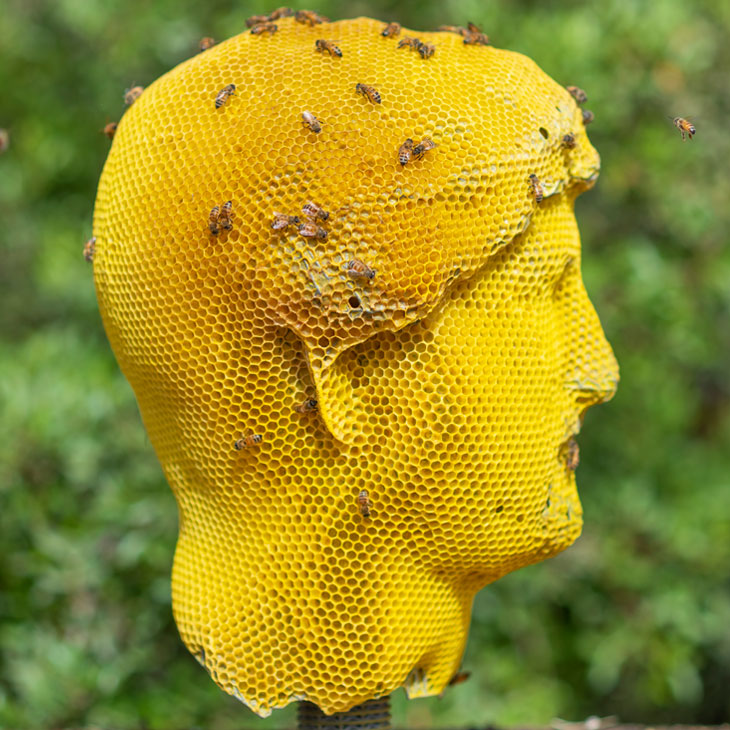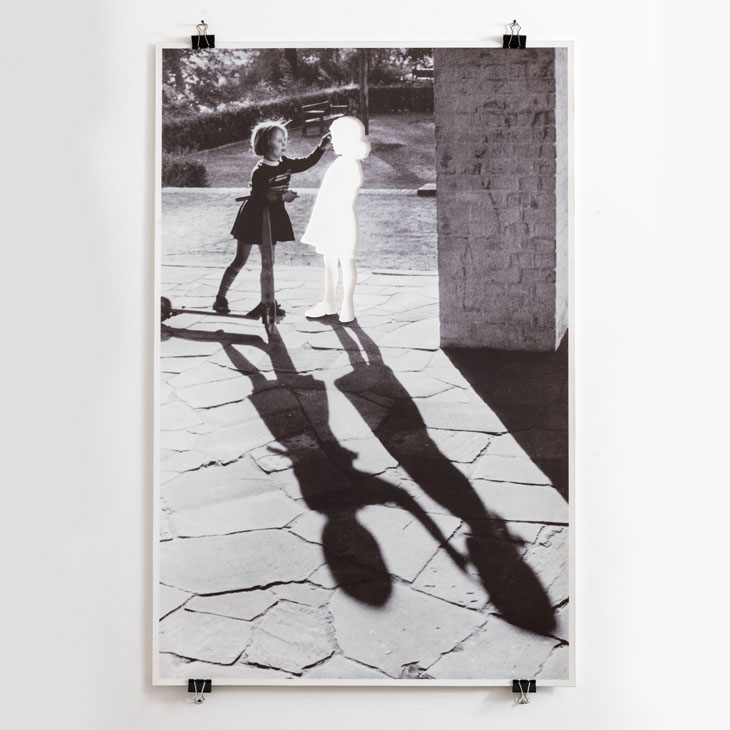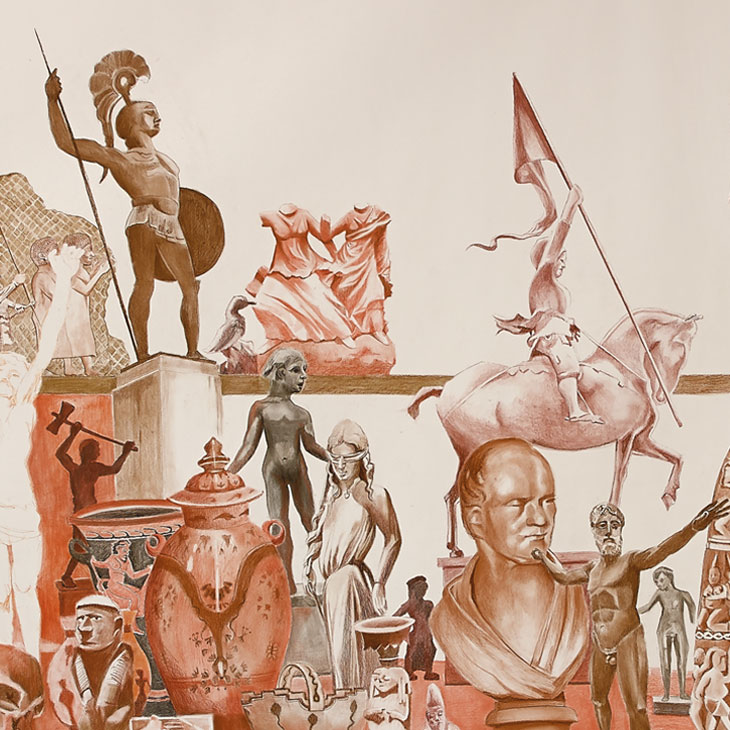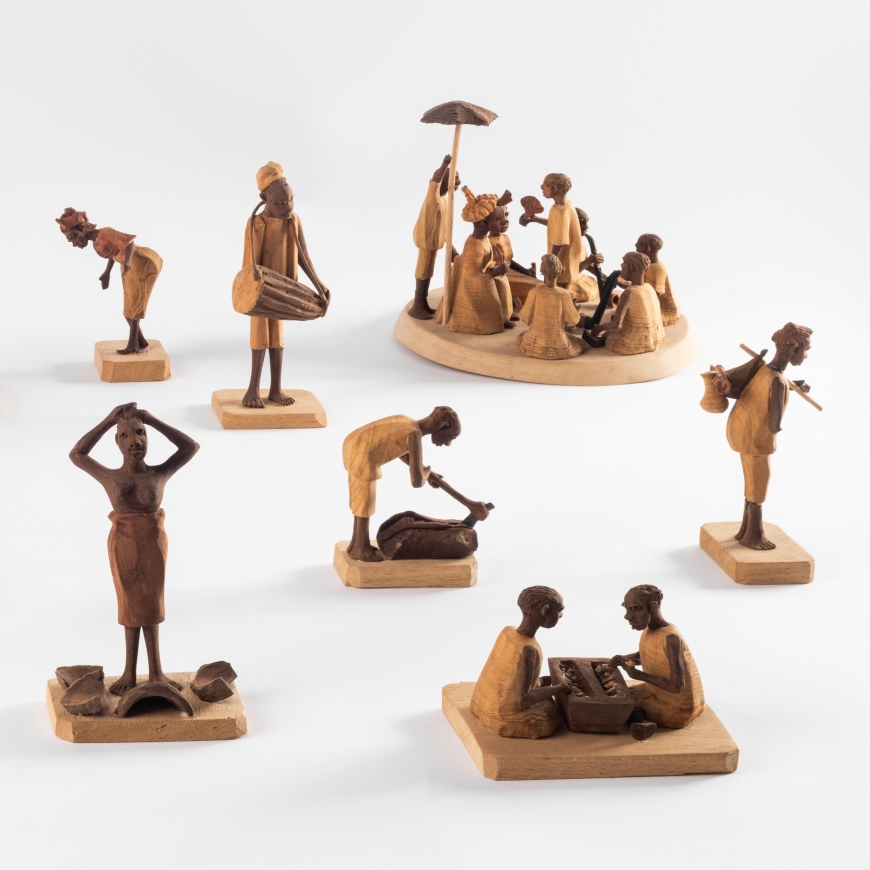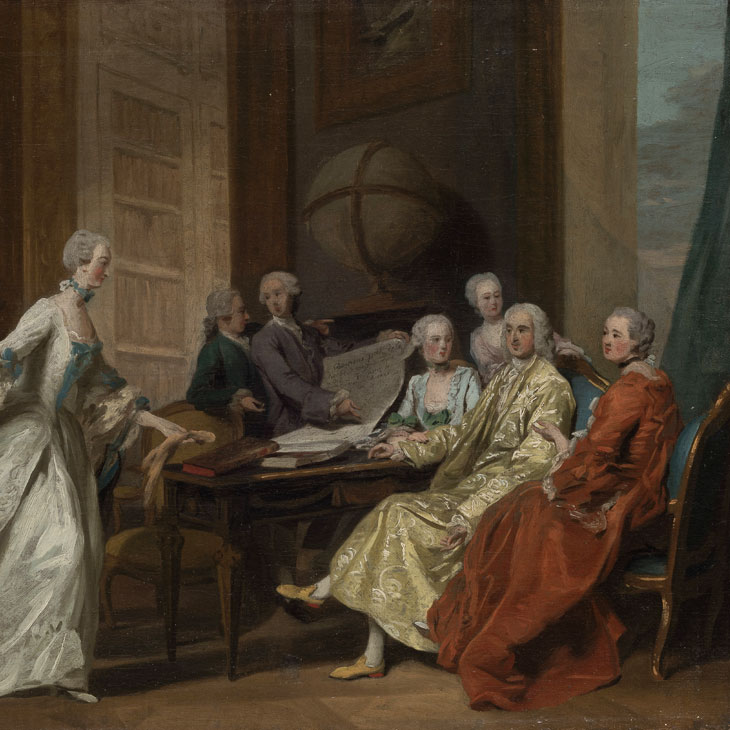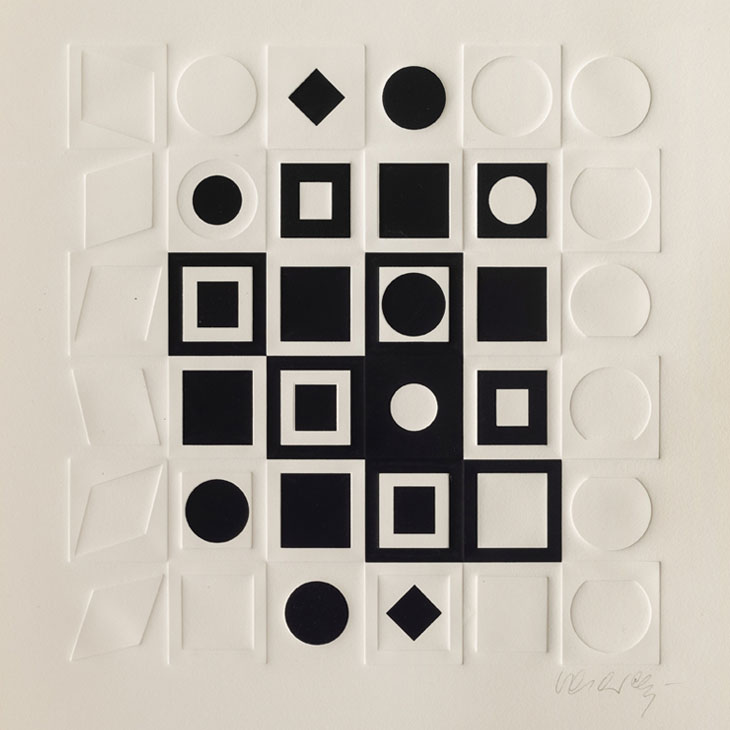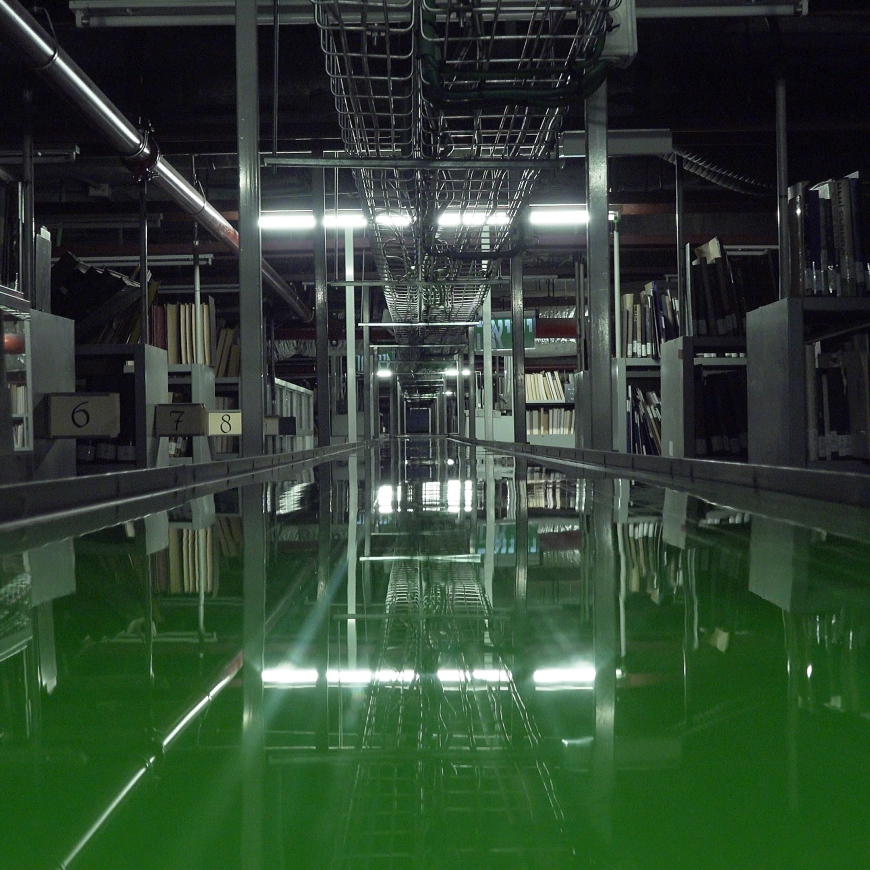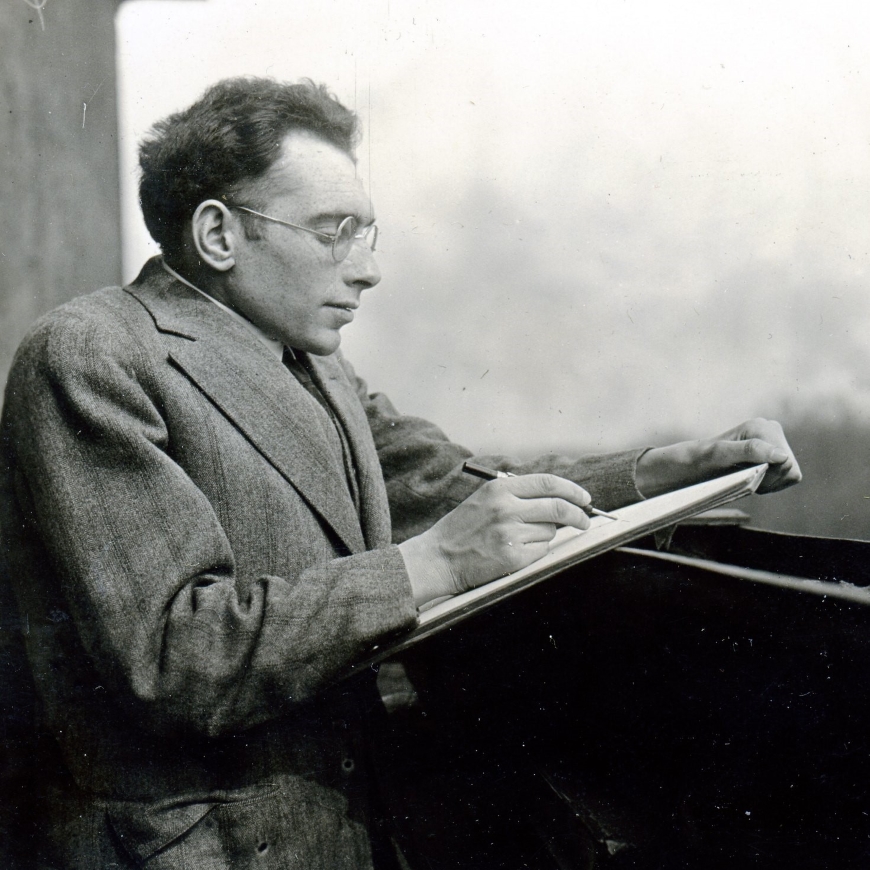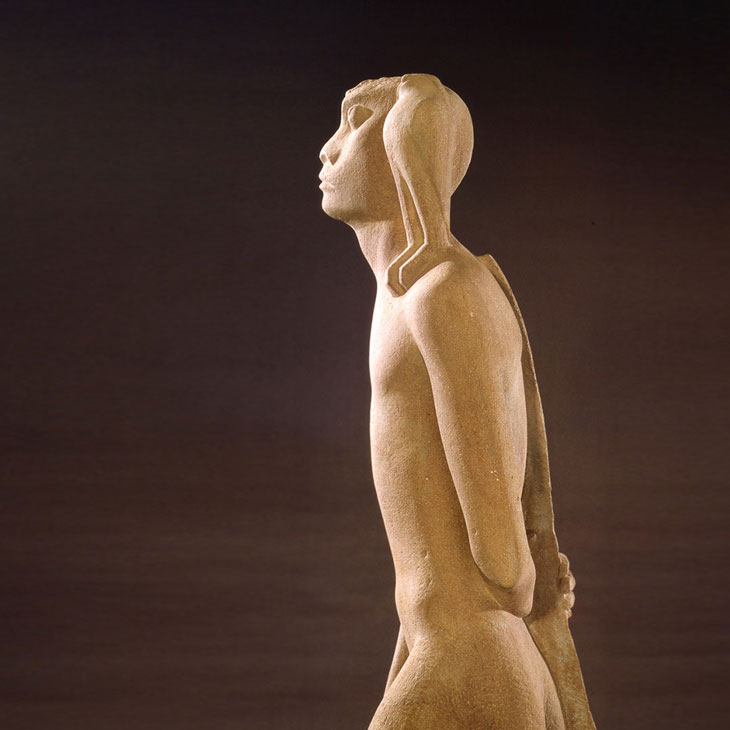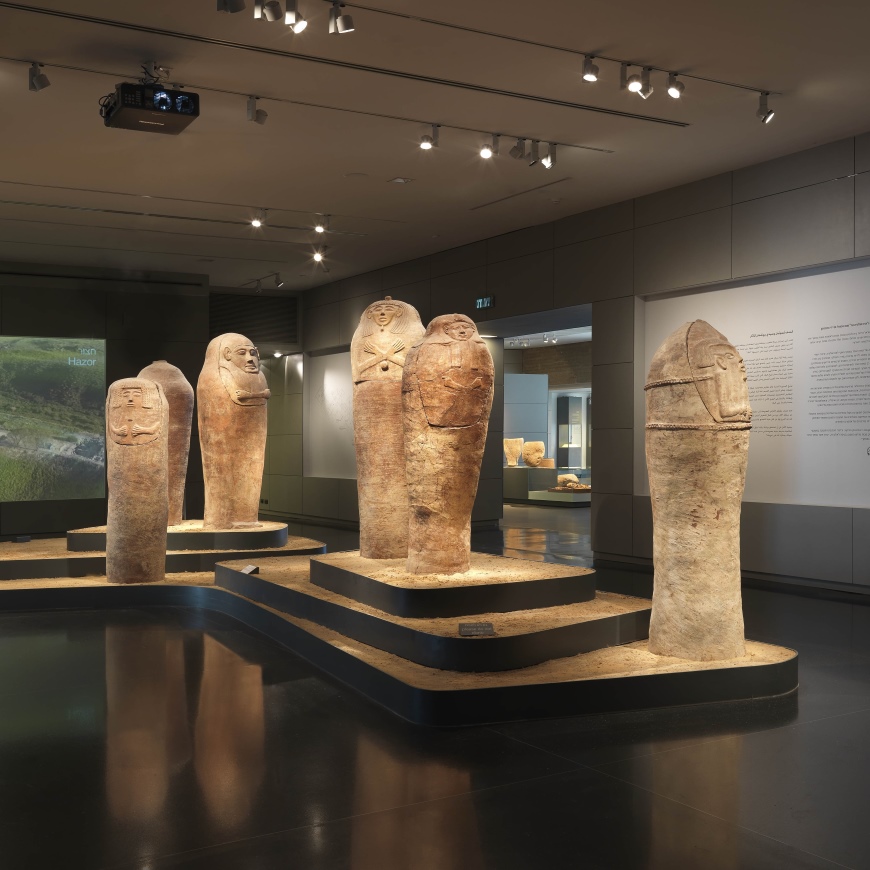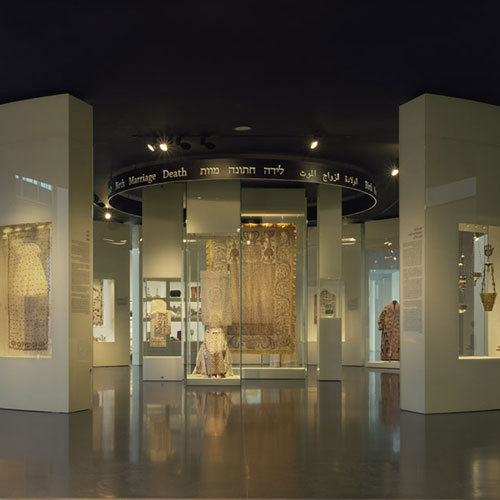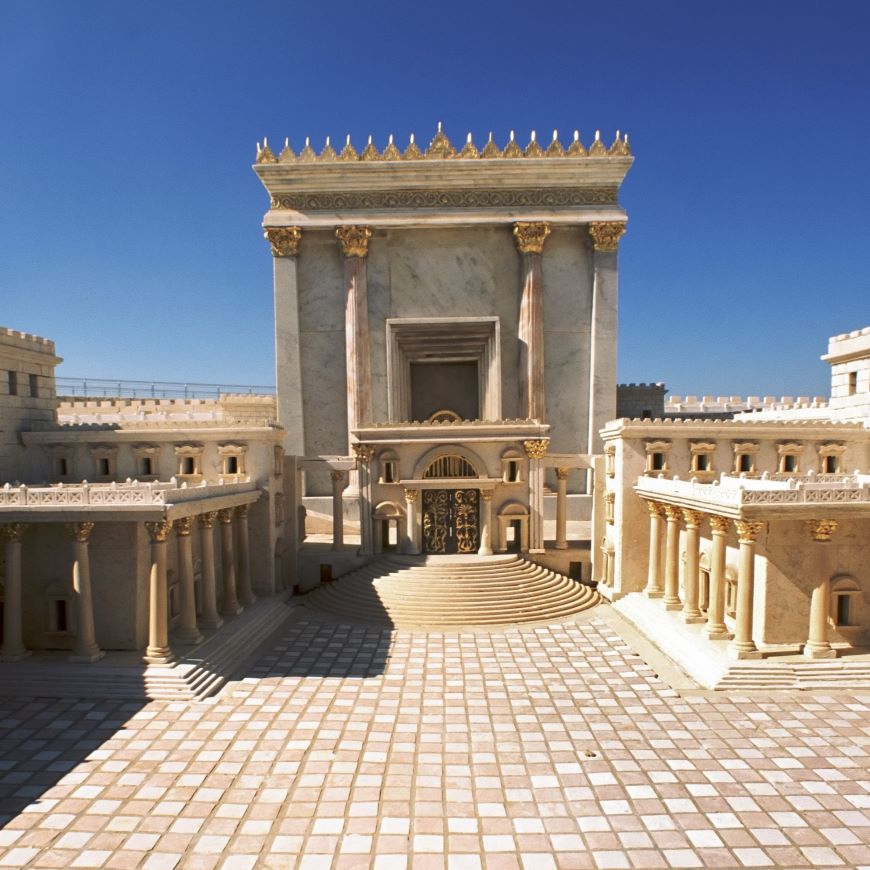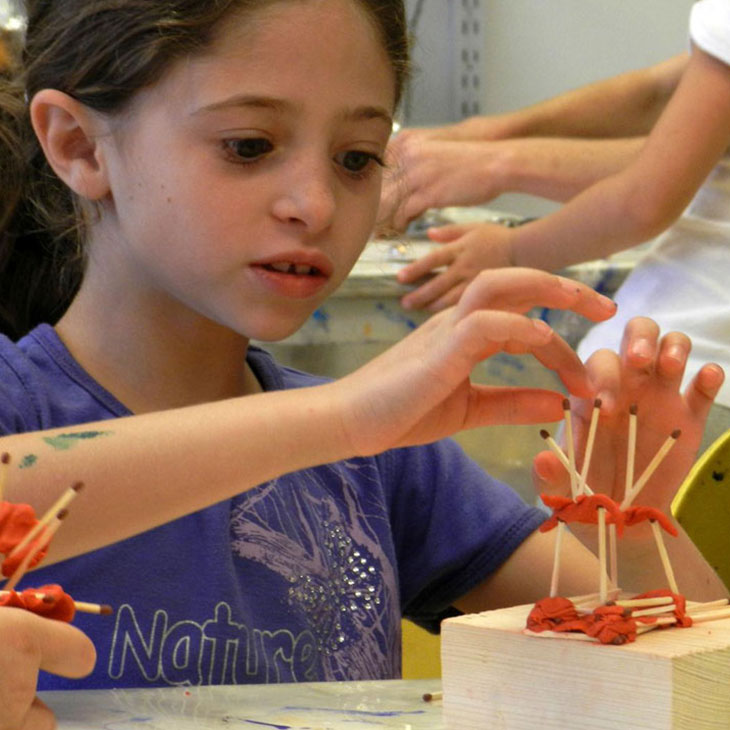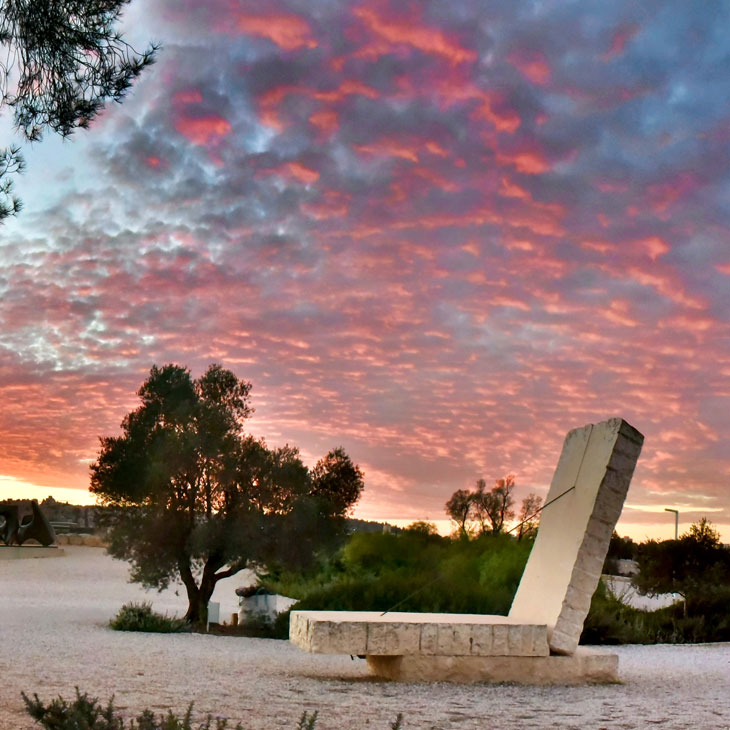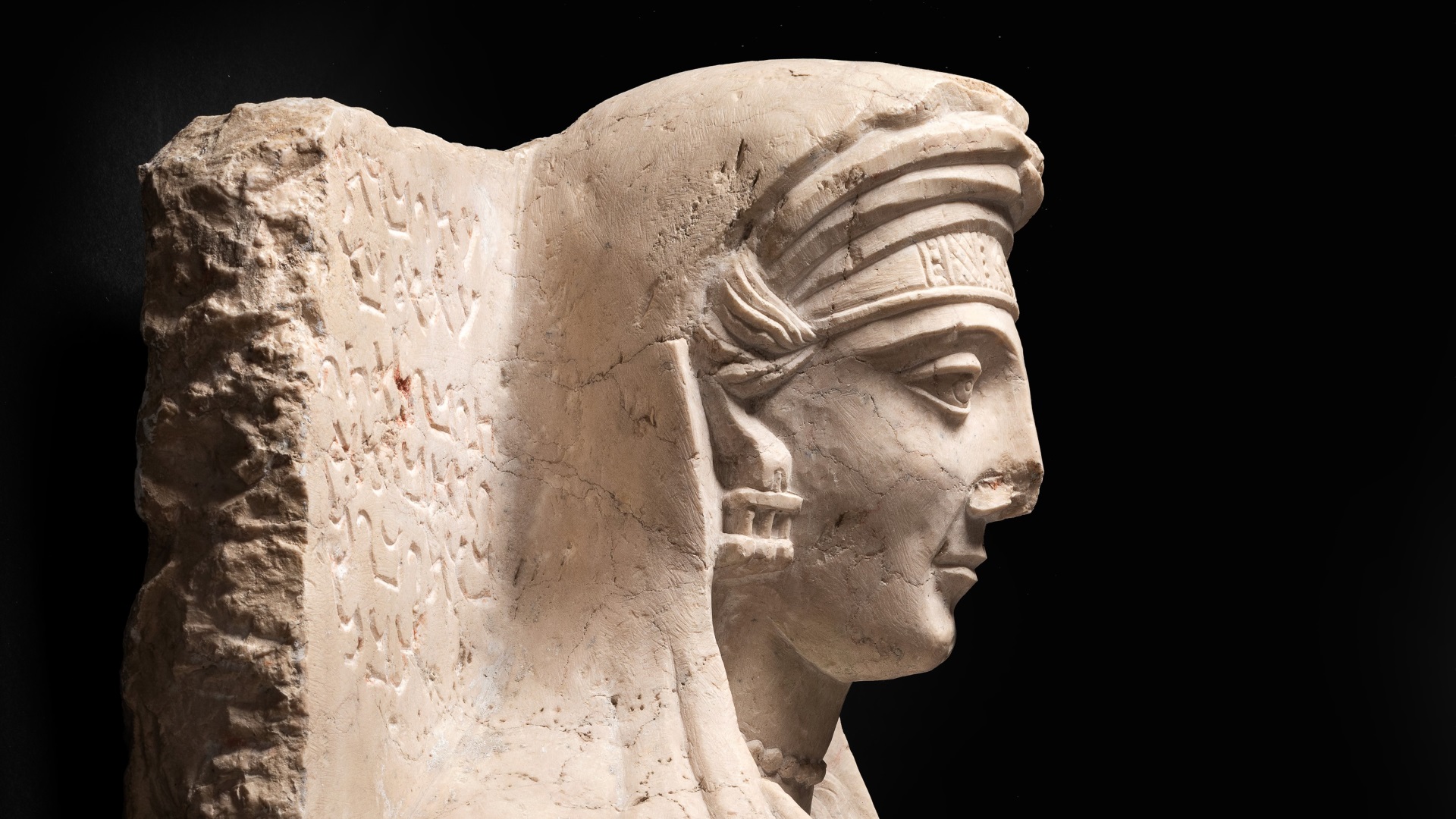
Woman of Valor: Funerary Portrait of a Palmyrene Woman
Special display
-
March 7 2024 - May 11 2024
Curator: Laura A. Peri
Designers: Michal Aldor and Yasmin Tams
-
Archaeology Wing’s Entrance
This impressive funerary portrait commemorates a wealthy matron of Palmyra (Tadmor), a famed caravan city in the Syrian Desert. The inscription in Aramaic identifies her as Attai, daughter of Ogga and wife of Yarhibola. Such stone slabs carved in relief were used to seal burial niches (loculi) in family tombs.
Attai’s portrait is a superb example of Palmyrene funerary art. In a distinctive style that blends local and Greco-Roman traditions, it depicts the richly bejeweled woman as an archetypal wife devoted to her husband’s household. Her head and shoulders are covered and her hair is tied. A key dangles from her brooch. With one hand she touches her veil and in the other she holds spinning tools – a distaff and spindle. Attai’s symbolic attire and gestures and the protective power of her jewelry guaranteed her the best possible afterlife.
This image, representing the epitome of female virtue, brings to mind the biblical “Woman of Valor”, especially the verse “She sets her hand to the distaff and her fingers work the spindle” (Proverbs 31:19).
- Jul 05Jul 06Jul 12Jul 13Jul 19Jul 20Jul 26Jul 27
- Jul 01Jul 04Jul 08Jul 11Jul 15Jul 18Jul 22Jul 25Jul 29
- Jul 01Jul 08Jul 15Jul 22Jul 29
- Jul 01Jul 04Jul 08Jul 11Jul 15Jul 18Jul 22Jul 25Jul 29
- Jul 02Jul 02Jul 02Jul 09Jul 09Jul 09Jul 16Jul 16Jul 16Jul 23Jul 23Jul 23Jul 30Jul 30Jul 30
- Jul 02Jul 09Jul 16Jul 23Jul 30
- Jul 30
